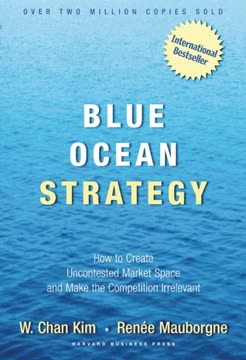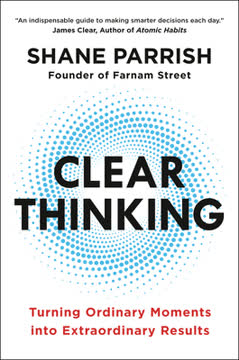重点摘要
1. 有效解决问题需要结构化的方法以避免常见陷阱
“一种看法也是一种不看法。”
避免偏见和陷阱。 解决问题容易受到认知偏见和陷阱的影响,导致无效的解决方案。常见的陷阱包括:
- 问题定义有误:误识核心问题
- 解决方案确认:寻找支持预设解决方案的证据
- 框架错误:应用不适当的思维模型或分析工具
- 范围狭窄:限制潜在解决方案的范围
- 沟通不畅:未能有效传达解决方案
为克服这些陷阱,解决问题者必须采用一种有纪律的、结构化的方法,挑战假设,考虑多种观点,并严格测试潜在解决方案。
2. 4S方法:陈述、结构、解决和推销的全面问题解决方法
“要像顶级战略顾问一样解决大问题并推销解决方案,你需要一种有纪律且可推广的问题解决方法和每个步骤的有用工具。”
掌握4S框架。 4S方法提供了一种全面的问题解决方法:
- 陈述:准确定义问题
- 结构:将问题分解为可管理的组件
- 解决:分析并开发解决方案
- 推销:沟通并说服利益相关者
这种方法整合了分析性和创造性思维,确保对问题空间和潜在解决方案进行全面探索。通过遵循这些步骤,解决问题者可以系统地应对复杂挑战,并开发出有效的、可操作的解决方案。
3. 准确陈述问题对找到正确的解决方案至关重要
“问题陈述得好,解决了一半。”
使用TOSCA框架以获得清晰度。 准确定义问题是找到正确解决方案的基础。TOSCA框架有助于阐明问题陈述:
- 困扰:是什么使这个问题真实且存在?
- 所有者:这是谁的问题?
- 成功标准:成功会是什么样子,何时实现?
- 约束:解决方案空间的限制是什么?
- 参与者:谁对我们如何解决这个问题有发言权?
通过解决这些要素,解决问题者可以创建一个清晰、可操作的问题陈述,指导后续的分析和解决方案开发。这一步对于避免解决错误问题或处理症状而非根本原因的常见陷阱至关重要。
4. 使用假设金字塔或问题树结构化问题
“框架是商业推理的主力。”
选择合适的结构化工具。 结构化复杂问题对于有效分析和解决方案开发至关重要。两种主要方法是:
-
假设金字塔:
- 从潜在解决方案开始,将其分解为支持假设
- 当你有一个强有力的候选解决方案需要测试时很有用
- 如果不小心管理,可能会有确认偏见的风险
-
问题树:
- 将问题分解为组成问题,而不假设解决方案
- 更开放,较少偏见
- 需要更多努力来全面开发
两种方法都应力求MECE(相互独立,完全穷尽)的分解。选择合适的结构化工具取决于问题的性质以及你对潜在解决方案的确定程度。
5. 解决复杂问题可能需要设计思维和同理心
“同理心是设计思维的基础。”
采用以人为本的设计。 对于复杂的、不明确的问题,传统的分析方法可能不够。设计思维提供了一条替代路径:
- 同理:理解用户的需求和体验
- 定义:综合见解以框定问题
- 创意:生成多样化的解决方案概念
- 原型:创建想法的具体表示
- 测试:收集反馈并完善解决方案
这种方法对以下问题特别有效:
- 以人为中心
- 复杂且不确定
- 难以精确陈述
- 抵抗传统分析方法
通过关注同理心和迭代解决方案开发,设计思维可以发现更有效地满足用户需求的创新解决方案。
6. 通过迭代过程生成、原型和测试创新解决方案
“经常失败以更快成功。”
拥抱实验。 创新问题解决通常需要生成多种潜在解决方案并快速测试。关键原则包括:
- 发散思维:在不加评判的情况下生成各种想法
- 快速原型:快速创建低保真度的解决方案表示
- 迭代测试:收集用户反馈并不断完善解决方案
创意生成的技术:
- 类比思维
- 头脑风暴和头脑写作
- SCAMPER(替代、组合、适应、修改、用于其他用途、消除、反转)
通过采用迭代、实验的方法,解决问题者可以发现和完善通过纯粹分析方法可能无法显现的解决方案。
7. 通过引人入胜的故事和展示有效推销你的解决方案
“讲述搜索的故事与讲述解决方案的故事不同。”
打造有说服力的叙述。 开发一个有效的解决方案只是战斗的一半;你还必须说服利益相关者采纳它。推销解决方案的关键原则包括:
-
使用金字塔原理:
- 从核心信息(主导思想)开始
- 用关键论点支持
- 提供详细的支持证据
-
在分组和论证结构之间选择:
- 分组:提出支持核心信息的平行理由
- 论证:构建一个逻辑序列,导向结论
-
开发模块化展示:
- 创建执行摘要
- 使用故事线页面介绍各部分
- 设计内容页面,标题清晰、以行动为导向
-
有效可视化数据:
- 使用适当的图表类型进行不同的分析
- 保持图表简单,聚焦于关键信息
通过打造清晰、有说服力的故事线,并用设计良好的视觉辅助工具支持,你可以有效地传达你的解决方案并推动利益相关者的认同。
最后更新日期:
FAQ
What's Cracked It! about?
- Problem-Solving Focus: Cracked It! by Bernard Garrette is centered on teaching readers how to solve complex business problems effectively, similar to top strategy consultants.
- 4S Methodology: It introduces the 4S method, which includes four stages: State, Structure, Solve, and Sell, providing a structured approach to problem-solving.
- Real-World Applications: The book uses real-life case studies to illustrate these concepts, making it practical for business leaders and aspiring consultants.
Why should I read Cracked It!?
- Enhance Problem-Solving Skills: The book offers valuable frameworks and techniques to improve your ability to tackle complex business challenges.
- Learn from Experts: Written by Bernard Garrette, Corey Phelps, and Olivier Sibony, the authors bring extensive academic and consulting experience.
- Avoid Common Pitfalls: It helps readers identify and avoid common pitfalls in problem-solving, such as flawed problem definitions and confirmation bias.
What are the key takeaways of Cracked It!?
- Structured Approach: The 4S method emphasizes the importance of a disciplined process in problem-solving.
- TOSCA Framework: This framework is essential for clearly defining problems before attempting to solve them.
- Importance of Communication: Effectively selling your solution is as crucial as solving the problem itself, integrating communication into the problem-solving process.
What is the 4S method in Cracked It!?
- Four Stages: The 4S method consists of State (define the problem), Structure (organize the problem), Solve (analyze and find solutions), and Sell (communicate the solution).
- Iterative Process: It emphasizes that the process is iterative, allowing for revisiting and refining each stage as new insights are gained.
- Flexibility in Application: The method can be adapted to various contexts, making it versatile for different types of business problems.
How does the TOSCA framework work in Cracked It!?
- Five Elements: TOSCA stands for Trouble, Owner, Success criteria, Constraints, and Actors, guiding problem definition.
- Guides Problem Definition: This framework helps in formulating a clear and actionable problem statement, ensuring all critical aspects are considered.
- Iterative Refinement: Encourages revisiting and refining the problem statement as new information is gathered.
What are the five pitfalls of problem-solving discussed in Cracked It!?
- Flawed Problem Definition: Misdefining the problem can lead to irrelevant solutions.
- Solution Confirmation: Occurs when solvers only seek evidence supporting their initial hypotheses.
- Wrong Framework: Using an inappropriate framework can lead to ineffective solutions.
- Narrow Framing: Oversimplifying complex problems can result in overlooking viable solutions.
- Miscommunication: Poorly communicating solutions can lead to inaction, even if the solution is sound.
What is the difference between hypothesis-driven and issue-driven problem structuring in Cracked It!?
- Hypothesis-Driven: Starts with a candidate solution and tests it, which can lead to confirmation bias if not managed carefully.
- Issue-Driven: Involves breaking down the problem into smaller, MECE components without preconceived solutions.
- Use Cases: Hypothesis-driven is efficient with strong confidence in the hypothesis, while issue-driven is preferred for complex problems.
How can I apply the 4S method in my organization according to Cracked It!?
- Start with State: Begin by clearly defining the problem using the TOSCA framework.
- Structure the Problem: Use a hypothesis pyramid or an issue tree to organize the problem logically.
- Conduct Analyses: Perform analyses to test hypotheses or answer questions in your issue tree.
- Sell the Solution: Communicate findings and recommendations effectively, focusing on audience needs.
How does Cracked It! incorporate design thinking?
- Human-Centered Approach: Emphasizes empathy in problem-solving, aligning with design thinking principles.
- Iterative Process: Design thinking involves phases of empathizing, defining, ideating, prototyping, and testing.
- Real-World Applications: Provides examples of successful design thinking applications, encouraging a creative mindset.
What are some best practices for selling solutions as described in Cracked It!?
- Clear Core Message: Start with a clear core message when presenting solutions.
- Use of the Pyramid Principle: Structure presentations with a logical flow to persuade the audience effectively.
- Engaging the Audience: Use storytelling and interactive discussions to foster a collaborative environment.
What are some analytical frameworks mentioned in Cracked It!?
- Industry Frameworks: Analyze value drivers specific to an industry, such as the Five Forces model.
- Functional Frameworks: Versatile tools applicable across various business contexts, like market segmentation.
- Logical Decompositions: Use logical reasoning to break down problems into manageable components when frameworks are unavailable.
What are the best quotes from Cracked It! and what do they mean?
- “Good analysis is the heart of good problem solving.”: Emphasizes the importance of thorough analysis in developing effective solutions.
- “Prototyping is a highly iterative process.”: Encourages continuous refinement of ideas through prototyping.
- “The ultimate objective of solution selling isn’t to gain intellectual support for your solution, but to trigger action.”: Highlights the importance of clear communication and persuasive storytelling to motivate decision-makers.
评论
《破解难题!》因其全面的解决问题方法而受到读者的高度赞扬。评论者们欣赏其结构化的4S方法、真实案例和实用框架。许多人认为这本书对有志于成为顾问、经理和问题解决者的人士以及有经验的从业者都非常有价值。该书因其理论与实践的平衡、清晰的写作风格以及像TOSCA框架和金字塔原理这样的实用工具而受到称赞。一些读者指出其学术语调,但仍然认为它对培养解决问题的技能非常有益。
Similar Books














